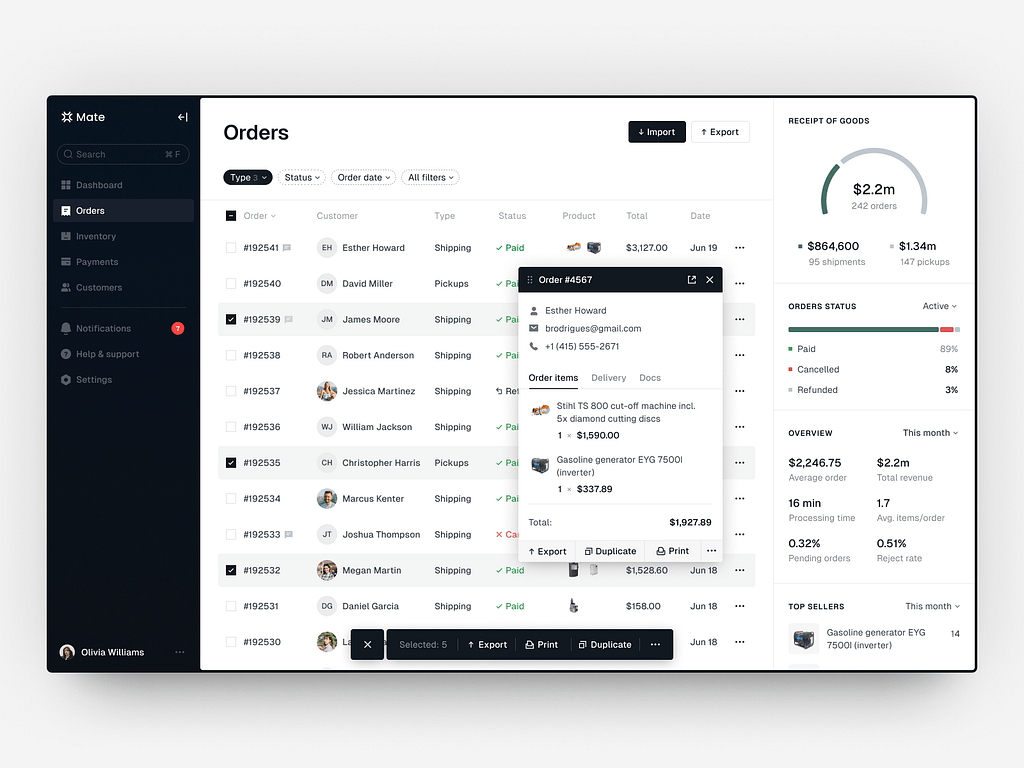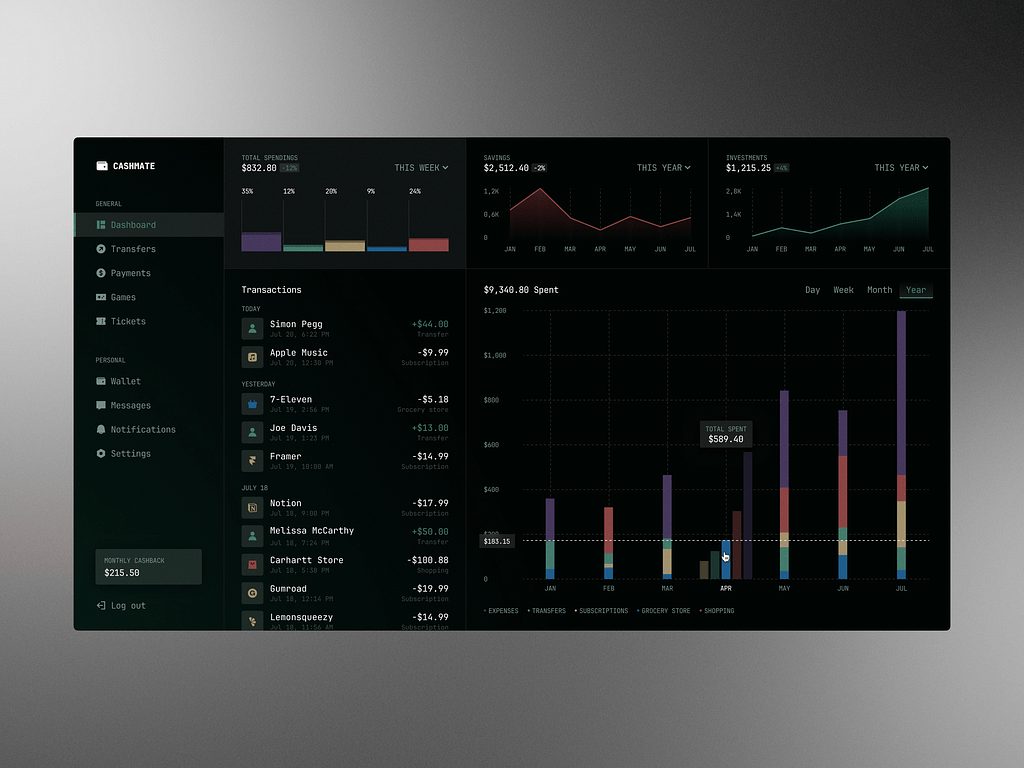As a startupper, you’re constantly juggling many challenges—from tight budgets to the pressure of meeting user demands. Imagine launching your application faster, easily scaling to meet client’s needs, and reducing operational costs without sacrificing quality. This is not a dream, however. The solution to your struggles is cloud app development.
Contents:
In this article, we’ll explore how this approach can alleviate your pain points, empower your startup, and set you on the path to success. Whether you’re looking to streamline your development process, enhance collaboration, or harness the power of data, the cloud offers solutions that can transform your vision into a thriving product.
What are cloud-based applications?
These programs run on the internet rather than being installed directly on your computer or mobile device. Instead of storing data and software files on your local machine, a cloud provider hosts everything on remote servers. This means you can access your app and its data from anywhere, as long as you have an internet connection.
For example, when you use online services like Google Drive or Dropbox, you’re using cloud-based applications. You can store and share files without worrying about taking up space on your device or losing your files if something happens to your computer. Also, your team members can access and manage files, making it easier to work collaboratively from different locations. In short, these applications are convenient and flexible.
Types of cloud-based applications
There are several types, each serving different purposes. When deciding on a business plan, pick the type that suits your business model and your project’s goals. It also should cater to the target audience.
Here are some common types along with real-life examples:
Software as a Service (SaaS)
These are complete software solutions hosted in the cloud that you can access via a web browser. For example, Google Workspace includes Google Docs, Sheets, and Gmail. You can create, edit, and collaborate on documents online.
Platform as a Service (PaaS)
They provide a platform that allows other businesses to build, test, and deploy applications online without dealing with infrastructure management. Heroku is an example of PaaS, where you can develop applications entirely in the cloud.
Infrastructure as a Service (IaaS)
This cloud application type offers virtualized computing resources over the internet, allowing businesses to rent servers and storage. Amazon Web Services (AWS) provides virtual servers to host your websites or applications.
Cloud storage solutions
Services for storing and managing files in the cloud instead of on a local hard drive. Dropbox is a well-known cloud storage solution, which lets you upload files and access them from any device with an internet connection.
Cloud-based CRM
These applications help businesses manage interactions with customers and streamline processes. Salesforce provides tools for sales management, customer service, and marketing automation.
Cloud-based accounting software
Such apps allow companies to manage their finances online. For instance, with QuickBooks Online, you can handle accounting, invoicing, and payroll from any device.

E-Commerce Admin Dashboard Design Concept by Shakuro
Advantages of cloud app development
Why build a cloud server application in the first place? It offers several advantages that can enhance development and user experience. For example:
- Scalability: You can easily scale the project to accommodate an increasing number of users or transactions. The resources can also be adjusted as demand fluctuates without significant infrastructure changes.
- Cost-effectiveness: With cloud infrastructure, you reduce upfront costs associated with hardware and maintenance. Most cloud services operate on a pay-as-you-go model, allowing for better budgeting and cost control.
- Accessibility: Your clients can access the application from any device with an internet connection. This flexibility supports remote work and collaboration.
- Automatic updates: Many cloud service providers handle software updates and maintenance, ensuring that users always have access to the latest features and security enhancements without manual intervention.
- Backup and recovery: Cloud-based applications often include automated backup solutions, which help to protect data against loss. This makes recovery easier in case of downtime or data corruption.
- Security: The providers typically invest heavily in security measures, including encryption, firewalls, and intrusion detection systems, often making their security standards higher than what a single organization could implement internally.
- Integration: You can easily integrate your project with other cloud-based services and APIs, allowing for streamlined workflows and enhanced functionality across different platforms.
- Performance: Cloud computing leverages powerful servers and resources to deliver high app performance, improving response times and user experiences.
- Environmentally friendly: Leveraging shared resources in the cloud, you can reduce the carbon footprint associated with energy consumption and waste from physical hardware.
These advantages make cloud app development attractive for many organizations looking to innovate, reduce costs, and improve the overall efficiency of their operations.
How to make a cloud-based application?
If you decide to create such an app, you need a thought-out plan with several key steps, a budget, and a skilled development team. It can be challenging, as you need to consider many things at once.
Here are the general steps:
Define the purpose
Start with clearly outlining the problem your app will address. Also, think about what target audience you want to cater to. If you are a bit puzzled, check out potential competitors for some ideas. Once done, specify the core features and functionalities you want to include based on the previous research.
Remember that while being on a tight budget, it’s better to opt for an MVP with essential features only. This way, you save the resources and polish the existing toolkit instead of spreading the effort thin.
Choose the cloud service model
Determine whether your cloud application will be SaaS, PaaS, or IaaS. This will guide your technology choices. Based on this choice, pick a trusted cloud provider that fits your needs. Evaluate factors like pricing, scalability, security features, and support options. Some well-known cloud providers are AWS, Microsoft Azure, Google Cloud, and others.
Create the app architecture
Once you have a basic understanding of your future project, design its architecture. Consider elements like microservices, databases, and front-end technologies. Make sure every element works well with the other. Also, plan for scalability and data storage solutions, as your business will expand at some point in the future.
Transfer your ideas into low-fidelity wireframes. After some user testing, re-iterate the designs based on feedback and turn them into high-quality prototypes. While working on UI/UX designs, create extensive documentation for consistency.
Pick the technology stack
Select programming languages and frameworks that best suit your application’s requirements (e.g., Node.js, React, Django, etc.). Since you will need to store user data, pick a database system, either SQL (like MySQL, PostgreSQL) or NoSQL (like MongoDB). If you struggle with the choice, rely on the team’s experience and skill set.
Develop the application
Start coding based on your design documentation. Focus on backend (server-side) and frontend (client-side) development. Implement APIs for communication between different services and components.
The user data needs protection, so implement security best practices during cloud app development. For instance, user authentication, data encryption, and secure APIs. Moreover, make sure that your services comply with relevant regulations (like GDPR).
Follow Agile methodologies to manage resources properly and focus on the tasks at hand.
Test and iterate
Once the build is ready, conduct thorough testing, including unit, integration, and user acceptance testing (UAT), to ensure the application functions as intended. Performance testing is also crucial to gauge how the app behaves under high load. This way, you prevent most bugs and potential issues on the launch day.
Deploy and maintain
Deploy your application to the cloud environment. Use continuous integration/continuous deployment (CI/CD) pipelines for automated deployments and updates. Then, set up monitoring tools to track app performance and user activities. After launch, regularly update the cloud application and address any bugs or security vulnerabilities.
Gather user feedback and scale
Keep collecting user feedback to make improvements and add new features. Iterate based on user insights and behavior patterns. Plan for scaling your business and releasing more tools.
Cloud app development costs
The expenses vary widely based on several factors, including the app type, the feature complexity, the technology stack, the development team’s location, and the overall project scope. It is crucial to conduct a detailed requirement analysis and obtain multiple quotes from development teams to get a more accurate estimate tailored to your project.
Here’s a breakdown of approximate costs for different types of cloud server applications:
Software as a Service (SaaS)
Functionalities like user management, billing systems, and integration with third-party services influence the costs heavily. Also, the expenses associated with a monthly subscription model, user interface design, and user authentication mechanisms stack the final sum. Later, you will deal with costs for ongoing maintenance and scaling infrastructure based on user growth.
Approximate development costs: $50,000 to $500,000+
Platform as a Service (PaaS)
The expenses include vast REST API development to interact with varying applications. What’s more, you need to build a robust backend infrastructure with reliable databases for managing user data and applications.
Approximate development costs: $100,000 to $1,000,000+
Infrastructure as a Service (IaaS)
To create this type of cloud server application, you spend resources on the development of complex virtualization and networking solutions. There is a significant consideration of security and data management layers. Also, this type requires robust support and maintenance systems for high availability.
Approximate development costs: $200,000 to $2,000,000+
Mobile cloud applications
Native app development is generally more expensive than cross-platform development. There are expenses for additional features like real-time data synchronization and push notifications. This app type needs backend services for data storage and processing.
Approximate development costs: $30,000 to $500,000+
Enterprise cloud applications
The budget spikes due to custom integrations with existing enterprise systems (ERPs, CRMs). There are strict industry standards and regulations. The project has higher complexity due to multiple user roles and access levels.
Approximate development costs: $200,000 to $5,000,000+
General cost considerations
- Team location: Development costs vary significantly based on whether you hire locally, outsource overseas, or use in-house teams. Different regions have varying labor costs based on local economies. For example, developers in North America or Western Europe typically command higher salaries compared to those in Eastern Europe, Asia, or Latin America.
- Timeframe: A longer development cycle increases costs, particularly if the team works on multiple projects simultaneously.
- Technology stack: Using cutting-edge or enterprise-level technologies raises costs due to specialized skill requirements. You will have to recruit dedicated specialists whose services are more expensive.
- Post-launch support and maintenance: Most apps require ongoing maintenance, regular updates, and user support.

Finance Management Web Dashboard by Conceptzilla
Best practices for developing cloud apps
Creating cloud-based applications involves several best practices to ensure they are efficient, scalable, secure, and user-friendly. Here are some of the key best practices to consider:
- Design for scalability: To scale horizontally, architect your app by adding more instances rather than adding more power to a single server. Implement load balancers to distribute traffic evenly across your application instances. This allows you to handle increased load seamlessly.
- Microservices architecture: Break your application into smaller, independent services that can be developed, deployed, and scaled independently. This improves maintainability and agility. Use APIs for communication between microservices, allowing for easier integration and flexibility.
- Automation and CI/CD: Automate your application’s build, testing, and deployment processes using CI/CD pipelines to increase efficiency and reduce errors. Use tools like Terraform or CloudFormation to manage and provision cloud resources programmatically.
- Security: Ensure that data at rest and in transit is encrypted to protect sensitive information. Implement role-based access control (RBAC) to restrict resource access based on user roles. At the same time, conduct regular security assessments and penetration testing to identify and address vulnerabilities.
- Monitoring and logging: Utilize monitoring tools to observe application performance, user behavior, and resource utilization in real time. Implement detailed logging to help troubleshoot issues and understand application usage patterns.
- Utilizing cloud provider services: Leverage the built-in services provided by cloud platforms (such as AWS Lambda, Azure Functions, and Google Cloud Functions) for functions like authentication, databases, and storage to streamline development. Decide between public, private, or hybrid cloud models based on your application requirements and compliance needs.
- Performance optimization: When developing cloud apps, use caching mechanisms, such as in-memory stores (e.g., Redis), to reduce latency and improve performance. Implement CDNs to deliver static content faster by using distributed servers closer to users.
- Cost management: Keep track of cloud resources and automatically scale down unused resources to control costs. Use tools to analyze and optimize cloud spending, such as AWS Cost Explorer or Google Cloud’s Billing Reports.
- Responsive design: Ensure your application is responsive and provides a good experience across various devices and screen sizes. Incorporate ways for users to provide feedback to continually improve your application.
- DevOps culture: Encourage collaboration and communication between frontend and backend teams to improve efficiency and reduce time to market. Foster a culture of shared responsibility for quality, security, and compliance across all team members.
Cloud app development trends
It is continually evolving, driven by advancements in technology and changing business needs.
First, serverless computing is gaining traction as it allows you to focus on writing code without managing server infrastructure. This can reduce costs and increase scalability, as resources are allocated only when needed.
There is a rise of hybrid and multi-cloud solutions. Organizations are increasingly adopting these strategies to leverage the best services from different cloud providers while maintaining flexibility and avoiding vendor lock-in.
Incorporating AI and machine learning into cloud applications is becoming standard. This enables you to analyze data more effectively, personalize user experiences, and automate various processes.
Low-code and no-code platforms democratize app development, allowing non-technical users to create applications quickly. This trend accelerates processes and reduces reliance on traditional coding.
With the increasing demand for real-time data processing, edge computing is becoming more prevalent. It involves processing data closer to the source, reducing latency, and improving the performance of cloud applications.
With cloud technologies, you can achieve faster time-to-market, enhanced scalability, and cost efficiency. The benefits, such as accessibility from any location, robust data security, and the ability to integrate artificial intelligence, help your business meet the ever-evolving demands of users.
Looking for cloud app development services? Contact us and let’s work together to build a reliable app, scaling your business and catering to the target audience.

